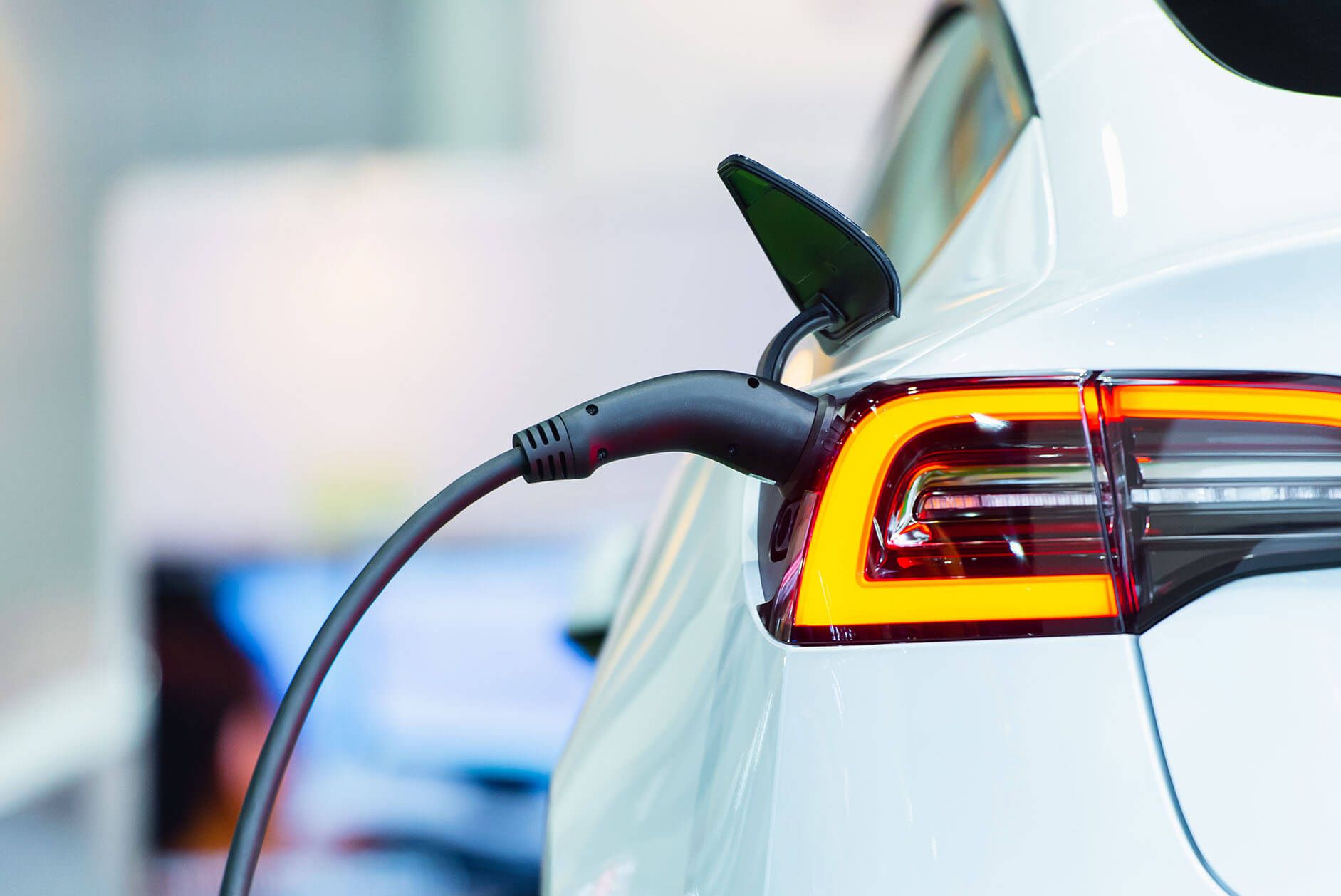BLOG
Telecom26 blog
Tech Tips #15: Super-charging EV connectivity

It’s the same with cars. Petrol stations have enabled mass adoption of vehicles powered by the internal combustion engine. One day, they won’t be there. They will be replaced by a similarly widespread infrastructure – with many in the same locations – of charging points.
The transition towards EVs is dependent on the availability of charging stations – both in terms of location and in terms of density. This is not an easy shift, but it is easy to visualise, when we think of previous transitions, like the move from horses to petrol or diesel-powered vehicles, or even our humble friend the fax.
To achieve this, great plans are afoot. These plans have significant implications for the infrastructure that is required to support charging stations – and also for connectivity to enable remote management and monitoring. In this Tech Tip, we’ll explore some of the challenges of these plans – and what might be needed in terms of connectivity to support them – a topic we also explored in this blog.
Leading the charge
Numerous countries have launched plans to supercharge their EV infrastructure. Of course, the primary driver is decarbonisation - to accelerate the transition from fossil fuels to renewable energy. This requires considerable investment. To give an example of such plans, we’ll focus on the EU.
The EU has addressed this transition through several key pieces of legislation. For example, the Alternative Fuels Infrastructure Regulation[1] sets out mandatory national targets and has three key objectives:
- To ensure minimum infrastructure to support the required uptake of alternative fuel vehicles across all transport modes and in all EU Member States to meet the EU’s climate objectives;
- To ensure full interoperability of the infrastructure; and
- To ensure comprehensive user information and adequate payment options at alternative fuels infrastructure.
As a result, a massive rollout of EV charging points is required by the legislation. The rules go further, defining minimum capabilities for each charging station, which will need to be tracked, as well as a minimum spacing for each in certain locations.
This latter point is important, as it translates into what is known as the ‘60km rule’, with a requirement that a fast-charging station for both personal and commercial (heavy-duty) vehicles every 60 kilometres along the ‘trans-European transport network’ (TEN-T). We have previously written about these transport corridors, and you can learn more, here.
Briefly, TEN-T establishes a network of road, rail, water and supporting infrastructure corridors that will span the EU zone to provide “integrated and intermodal long-distance, high-speed routes[2].” These also include enhanced telecommunications infrastructure.
These requirements clearly present a considerable challenge. Connectivity to cloud infrastructure will be required for each EV charging point, which will likely be provided via mobile signal. Ensuring adequate connectivity across the length of each TEN will be a challenge – but charging points will also be required along roads that are not part of the TEN-T network – and these could well be in remote regions or on border zones that are not well served by mobile connectivity.
Other EU legislation also addresses these targets. In particularly, the Energy Performance of Buildings Directive[3] sets out requirements for the installation of EV charging stations in both new residential and commercial buildings, covering charging at home and at places of work or shopping. The task of retrofitting these to existing buildings remains an open challenge, and it has been suggested that national legislation could seek to address this important gap[4].
Either way, there is set to be significant and widespread investment in both EV charging stations and the infrastructure required to support them. Estimates vary, but some have suggested that nearly 7 million public charging points will be required by 2030 – with many more in the years to follow[5]. That is a hugely ambitious target, given today’s figure of around 500,000 EV charging stations[6].
What are the requirements?
EV charging stations will have to support multiple capabilities. Real-time and ad hoc payment processing is, of course, a must (each station will essentially have to include PoS services) – but so too is the available of open data regarding occupancy, status, pricing, location and more, so that applications can direct users to the optimum location for their needs[7]. This may also encompass interaction with electric vehicles, to enable autonomous scheduling and planning for charging stops.
All of this means that secure, reliable connectivity will be mandatory for all such public charging stations. While some of this connectivity may come from repurposing existing assets – such as fibre cabinets – this option will not be available in many areas, particularly rural and remote locations[8].
So, since regular and on-demand connectivity is necessary, mobile connectivity may also be required – either as a backup or where it’s not possible to connect to the fixed network. This problem will be particularly acute as EV charging stations spread across countries (and, to return to our example), the EU region.
If decarbonisation is to reach every corner of the land, then our farms and villages – our rural communities – will need charging stations, just as they will in our towns. The same will be true in other countries pursuing these goals, such as the United States, China and others[9].
Driving EV deployment nationwide
Connectivity, then, is a central consideration for any rollout of EV charging stations. And, just like any other deployment that reaches the furthest corners of a country, connectivity to a single mobile network won’t be sufficient.
What’s needed is the ability for an EV charging station to connect to any operator. If SIMs need to be changed or deployed in situ, further friction will be created. While eSIM isn’t generally available for these devices yet, it can already be enabled. That will help – but the eSIMs should be able to connect to any of the networks available in the chosen location.
They should be able to switch to another network automatically when coverage is lost, so that consistent experiences can be delivered to EV users. Additionally, in deployments close to borders, they should also be able to jump onto networks in adjacent countries, if local connectivity is interrupted, as can sometimes happen.
Telecom26 – how do we help?
We’re already in discussion with providers of EV charging stations and anticipate that these will accelerate. Providers need to know that they can ship from their facilities to any location and that connectivity to the mobile network just works – regardless of whether it’s used as the primary or secondary communications interface. Mobile connectivity needs to be there, as a failsafe if nothing else.
Our global SIM and eSIMs can connect to more than 650 mobile networks, in more than 200 countries – providing the reassurance that connectivity can be enabled, regardless of location. And, with automated switching to alternative networks — including those in neighbouring countries in border regions —connectivity can be assured, so that users obtain the service levels they will just take for granted. We provide the resilience required for mass deployment of EV charging stations, from urban to rural regions – and along supra-national infrastructure, such as TEN highways.
We’re also addressing the eSIM challenge for IoT too. Our LPAd innovation means that eSIM can already be brought to devices, helping EV charging station providers simplify rollout and more easily manage the profiles they use.
So, while mobility isn’t the key requirement here as such, what is essential is to ensure that connectivity in general can be achieved, regardless of the location of the charging station. For the ambitious decarbonisation goals to be achieved, mobile connectivity is a small but crucial component that cannot be overlooked, providing both resilience and reach to support mass deployments across nations and regions.
Why not talk to us and see how we can help with complex rollouts of national and international infrastructure?
[1] https://transport.ec.europa.eu/transport-themes/clean-transport/alternative-fuels-sustainable-mobility-europe/alternative-fuels-infrastructure_en
[2] https://en.wikipedia.org/wiki/Trans-European_Transport_Network
[3] https://energy.ec.europa.eu/topics/energy-efficiency/energy-efficient-buildings/energy-performance-buildings-directive_en
[4] https://theicct.org/new-eu-rules-on-private-charging-and-how-member-states-can-legislate-more-ambition-mar24/
[5] https://www.acea.auto/files/Research-Whitepaper-A-European-EV-Charging-Infrastructure-Masterplan.pdf
[6] https://www.statista.com/statistics/955443/number-of-electric-vehicle-charging-stations-in-europe/
[7] https://www.virta.global/blog/this-is-how-eu-regulation-accelerates-the-electric-vehicle-revolution
[8] https://newsroom.bt.com/bt-group-powers-up-first-ev-charger-transformed-from-a-green-cabinet-available-to-the-public-free-of-charge-as-part-of-nationwide-pilot/
[9] https://www.cspdailynews.com/future-fuels-2024-2024/ev-growing-pains



